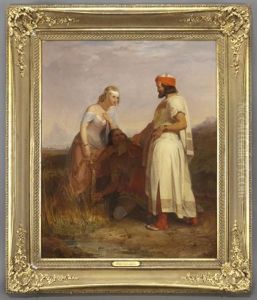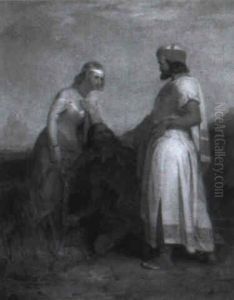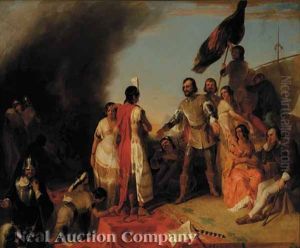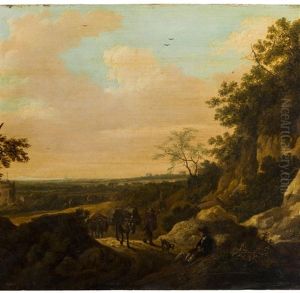Peter Frederick Rothermel Paintings
Peter Frederick Rothermel was an American painter known primarily for his historical and portrait paintings. Born on July 8, 1817, in Nescopeck, Pennsylvania, Rothermel grew up in a time of burgeoning American identity, a context that would profoundly influence his choice of subjects and artistic direction. Unlike many of his contemporaries who sought training in Europe, Rothermel's early education in art was largely self-taught, complemented by a brief period of study under the tutelage of John Rubens Smith in Philadelphia. His career began in the realm of portrait painting, a genre through which he honed his skill and gained recognition.
Rothermel's ambition and talent soon propelled him into the sphere of historical painting, a genre that was gaining popularity in the United States for its role in nation-building and shaping a collective memory. His most notable work, 'Battle of Gettysburg: Pickett's Charge', completed in 1870, is a monumental canvas that depicts the climactic moment of the battle, showcasing Rothermel's skill in handling complex compositions and his ability to infuse his paintings with dramatic intensity. This painting, among others, earned him a place as a significant figure in American art, as it resonated with the public's desire for narratives that celebrated national heroism and identity.
Throughout his career, Rothermel was involved in the artistic community, contributing to the development of institutions such as the Pennsylvania Academy of the Fine Arts, where he served as a director. His works were widely exhibited, earning him accolades and recognition. Despite the success of his historical paintings, Rothermel continued to produce portraits, landscapes, and religious subjects, demonstrating a versatile mastery over a range of genres.
Peter Frederick Rothermel's legacy is that of a painter who captured the spirit of his time, using his brush to document the young nation's struggles and triumphs. He passed away on August 15, 1895, in Linfield, Pennsylvania, leaving behind a body of work that continues to be studied and admired for its historical significance and artistic merit. In the end, Rothermel's contributions went beyond his canvases, as he played a part in the broader narrative of American art's evolution during the 19th century.






















